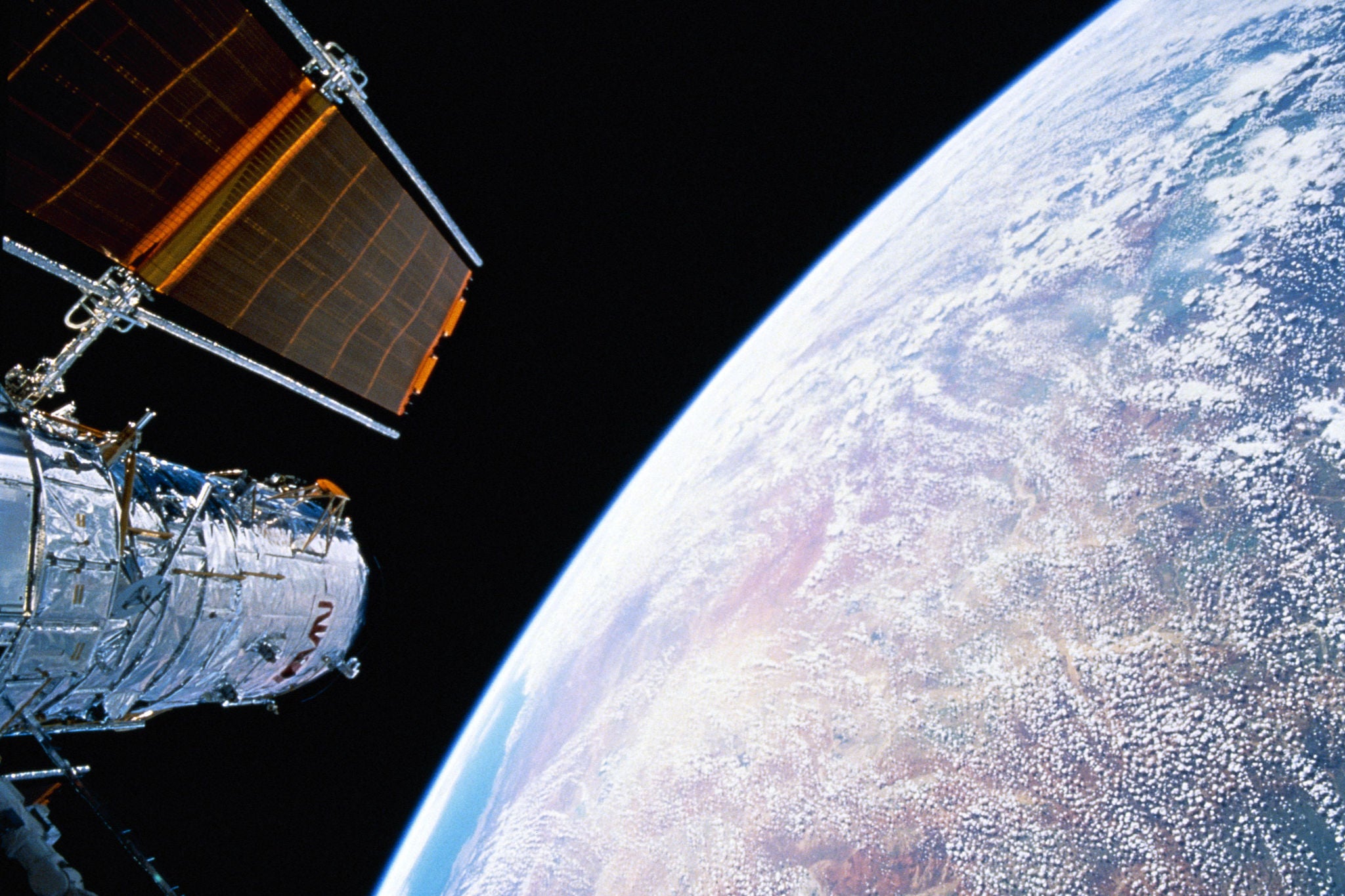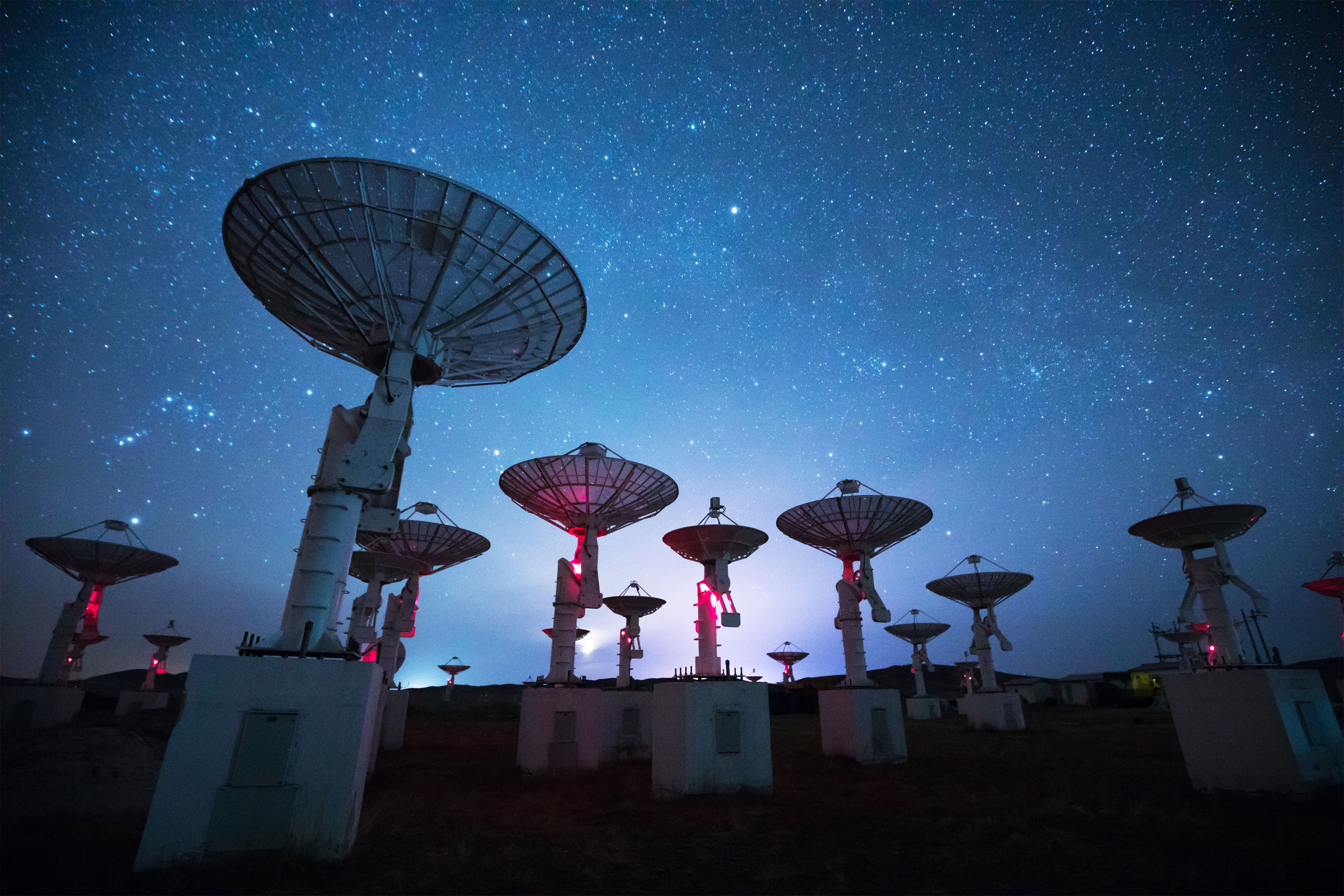EY refers to the global organisation, and may refer to one or more, of the member firms of Ernst & Young Global Limited, each of which is a separate legal entity. Ernst & Young Global Limited, a UK company limited by guarantee, does not provide services to clients.

Dr. Brian Killough has joined EY from NASA to bring his domain expertise – and passion for Open Science – to unleash the power of Space Tech to help solve business problems on Earth
We’re making the giant leap from people believing satellite data is the unattainable preserve of government space agencies, to understanding this precious Earth Observation data is not only improving in quality, but in accessibility.
Satellite data is becoming democratised and that’s very important to me. I’ve been a vocal advocate for Open Science for a long time and finally we’re living in a world where governments and private enterprise alike are sharing their ideas – and even their algorithms. That is accelerating innovation and solutions for everyone.
We are right in the midst of what EY Space Tech Lab leader Anthony Jones calls a once-in-a-generation technology revolution, as the commercial world enters the space domain and starts to make sense of what this data means for their business. Now we are all able to look at this satellite imagery, the broad swathe of which – across a range of resolutions and sensor types – is labelled Earth Observation or EO data.
At EY, we’re about helping our clients understand it, trust it and open their minds to the possibilities. Our EY Space for Earth platform is designed to help them explore scenarios and see how this data can truly improve life on Earth, in myriad ways.
Why is EY in Space Tech?
I got my first taste of what EY was about in 2019 when I worked with EY’s Open Science Data Challenge team through a partnership with NASA. In my NASA capacity, I helped facilitate integrating satellite data into the challenge. Now I’m in the EY tent, and I’ll continue supporting the 2023 challenge, which is already under way.
We are taking deep expertise that exists within EY and deploying it into Space Tech. EY has a whole bunch of incredible data analysts and EY is such a diverse organisation, with so many talented people. The organisation’s standing as a global entity and its depth of expertise in data and analytics is ideal for Space Tech.
EY’s deep relationships with its clients generally began from the assurance and the accounting side of the house. We audit their books, so there’s inherent trust and an open door to speak to their executive teams about the potential for Space Tech to help them more broadly in other parts of their business. We realise that part of our role is to help them to trust satellite data, too.
Trust is absolutely key, especially when you’re taking your first steps with a technology that has until now seemed to be beyond your realm.
The business case for Space Tech
Coming out of NASA, I’m so energised by the green fields where Space Tech can go to work on real-life business problems. We’re asking our clients to explore that with us – what kind of pain points could satellite data help them to solve? What daily business questions could it help them to answer? So much data already exists that it’s really a matter of framing the questions. We’re beginning with what I see as the low-hanging fruit, monitoring things where we know that good quality satellite data already exists – and it’s getting better all the time.
When I was at NASA, I spent my time helping governments particularly in developing countries, which was exciting. I had a passion for using satellite data to help people solve critical problems – and I see now how transferrable the same approach can be for industry.
The energy sector is another one where the potential for satellite data to transform the way they inspect their remote assets is enormous. Mining companies must manage so many remote assets, from the mines themselves to ports to railways and processing plants. I’ve already talked to one group who’d purchased some satellite data but they simply weren’t quite sure how to go about the next step, to make sense of it.
What EY Space for Earth gives them is the structure and ability to dive into that satellite data and understand the potential ROI. How could we use satellite data? How might it help our operations? Whether that’s vegetation encroachment on 24/7 railway tracks or monitoring the restoration work on an old mine, you can track all of that now and over time. From space, it’s easy to check things that are green – they pop out easily in the Earth Observation imagery.
One of the problems we’ve used EO for as we’ve developed EY Space for Earth is monitoring water pooling, both to detect leaks and after rain events to better understand areas that are prone to flooding. Honestly, those are relatively simple things to monitor using satellite data, but you need the data and analytics expertise to make sense of it, and the algorithms to help automate it.
As we progress, we will start to think about using hyperspectral data, which will allow us to zoom in and focus on a particular type of vegetation or a particular disease in vegetation. There are also some interesting things coming out here and it’s growing fast. The resolution is so fine – you could pick out me walking down the street, cars and trees. Pair that with Machine Learning and you can automate object detection to do some amazing work. It’s pretty much like taking a camera photo from space. There are some really cool opportunities ahead to dream up potential applications with clients.
The need for a space strategy
There’s so much untapped value in the existing moderate-resolution data that’s already out there. There are so many products we can build from it now that satellite data is being democratised for business. Really until the past few years, even though the data from NASA’s Landsat program and the European Space Agency’s Sentinel satellites was technically open and available, the primary users were government and researchers. There have been small companies building products, but no company the size of EY has come along to build a Space Tech platform like EY Space for Earth.
There’s a ton of opportunity. You start looking at this data and it’s fascinating to see what it can tell you what you can do with it. I’m constantly amazed by new algorithms popping up around satellite data. Just a couple days ago, I was searching for some algorithms when Jack (Dr Jack White) and I were talking about some work we’re doing on water quality. I found a new Machine Learning water quality algorithm that someone had developed and released.
Things have changed: NASA itself has announced 2023 as the Year of Open Science. It’s remarkable and it’s a whole piece of why this is the moment for Space Tech – I am finding great new open algorithms all the time that have been shared by people around the world. Then we brainstorm how they can help our clients.
If your business doesn’t yet have a space strategy, you have two problems. One, you’re giving away an opportunity that your business could prosper, be more efficient and more effective by using satellite data. You’re overlooking a potential opportunity.
I’m not saying that every business will have massive changes by incorporating satellite data. Some will find it will help them just a little bit, it might replace some tasks they currently do manually, or simply do it incrementally better. Then there are businesses where Space Tech has huge potential – and not investigating that could be an enormous, missed opportunity.
The second thing is that if you want to be seen as a company that’s relevant, cutting-edge and future-focused, you simply must have a space strategy. If I’m an investor looking at two companies and one couldn’t care less about their satellite strategy and the other is really working on where space fits in their business, I’m interested in that second company, because they're looking ahead.
Space is also perhaps the easiest way to attract talented young engineers and data analysts! You could do worse than take a few young people and have them develop and implement your space strategy for your company!
The world is all about data and technology, and the data from satellites is one of those buckets of data we simply have to look at and ask how it can help us do better. It’s a huge opportunity to build a better future.
Dr. Brian Killough was with NASA for more than 35 years and is now a Satellite Data and Applications consultant and senior advisor for both NASA and EY. During his time at NASA, Dr. Killough led the Committee on Earth Observing Satellites (CEOS) Systems Engineering Office (SEO). The SEO supports the international CEOS organisation, which comprises 63 Space Agencies and organisations coordinating satellite Earth Observation data for enhanced societal benefit. Under the leadership of Dr Killough, the SEO had a significant role in the Open Data Cube initiative and the development of regional data cubes in Africa and the Pacific Islands. Dr. Killough received his BS degree from the University of Virginia, his MS degree from George Washington University and his PhD from the College of William and Mary. He has authored more than 30 technical papers and received the NASA Exceptional Service Medal in both 2016 and 2022.
Summary
Dr Brian Killough has joined EY from NASA to bring his domain expertise – and passion for Open Science – to unleash the power of Space Tech to solve business problems on Earth.
Related articles
Exploring a world of new possibilities for Earth from space
Ideas, optimism and a genuine sense of community were all present in force at the 14th Australian Space Forum.
Five cybersecurity challenges (and opportunities) for Space Tech companies
As the Space Tech industry grows, it is an opportunity to get cyber right from the get-go, by taking a Security by Design approach. Cybersecurity in space is going to be arguably more important than it is on Earth. What are the risks and challenges, and how can you harness them as opportunities? These risks apply to start-ups and SMEs, but also affect any businesses working with them.
How Australia is strategising its place in the space race
As the potential for space tech to transform all manner of industries hits a new high, Australia is playing to its considerable strengths.





